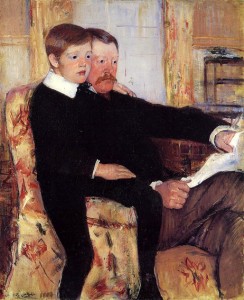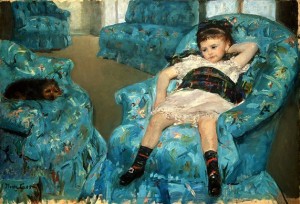Degas/Cassatt underline why D.C. is more than a dull government town
Every time D.C.’s detractors dismiss it as a ‘dull government town’, I want to point down the Mall and the dozen free museums between the Capitol and Washington Monument. It is, as someone once said, a “walkable treasure map of art, science and history. No two visits are alike.”
Consider the National Gallery of Art, contained in two buildings and with an immense rotating display of permanent works, spanning ancient to contemporary art, and travelling exhibitions.
Degas /Cassatt, which will run till October, has to be one of my favourite exhibitions, laying bare the great intellectual affinity between Frenchman Edgar Degas and American Mary Cassatt.
So great were some of their shared enthusiasms that from a distance, Ms Cassatt’s ‘Portrait of Alexander J. Cassatt and His Son, Robert Kelso Cassatt’ (top left) might quite easily be a Degas.
Without Degas’s help, her ‘Little Girl in a Blue Armchair’ (right) would have been a great deal more flat and less interesting. As she would later recount, Degas painted the corner into what had been a straight, flat wall. It made the room more dramatic.
The point about their artistic affinity is that their ideas twinned across what might have been the gulf of their national contexts. Both artists were highly-educated realists from wealthy banking families. They saw the world much the same. Passports meant less than the ability to move in the same inter-connected universe of art and ideas.




